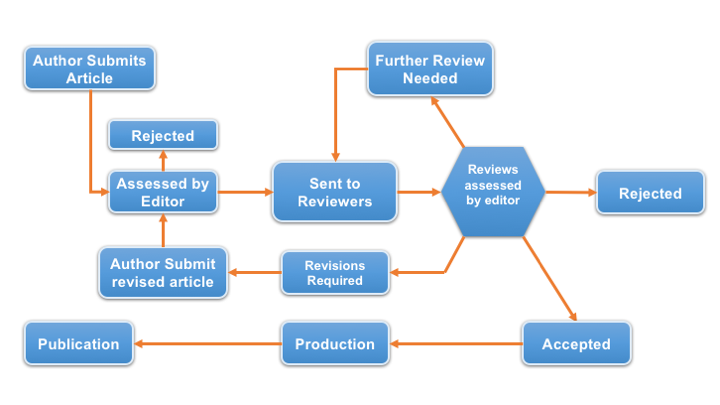Peer review is an integral part of scientific publishing that confirms the validity of the science reported. Peer reviewers are experts who volunteer their time to help improve the journal manuscripts they review—they offer authors free advice. Through the peer-review process, manuscripts should become:
More robust: Peer reviewers may point out gaps in your paper that require more explanation or additional experiments.
Easier to read: If parts of your paper are difficult to understand, reviewers can tell you so that you can fix them. After all, if an expert cannot understand what you have done, it is unlikely that a reader in a different field will understand.
More useful: Peer reviewers also consider the importance of your paper to others in your field and can make suggestions to improve or better highlight this to readers.
Rejection
Your paper will be rejected if it:
▪ Lacks proper structure
▪ Lacks the necessary detail for readers to fully understand the authors' analysis
▪ Has no new science
▪ Does not clearly explain which parts of the findings are new science, versus what was already known
▪ Lacks up-to-date references
▪ Contains theories, concepts, or conclusions that are not fully supported by its data, arguments, and information
▪ Does not provide enough details about materials and methods to allow other scientists to repeat the experiment
▪ Describes poor experimental design, or faulty or insufficient statistical analysis
▪ Has poor language quality
Publication is a difficult process, and you must be prepared to defend your submission against rejection from both program chairs and peer reviewers. However, do not be too persistent. Generally, only one letter defending your submission will be accepted for each of the review stages (program chair review and peer review).
Revision
When revising your manuscript and responding to peer review comments:
▪ Address all points raised by the program chairs and reviewers
▪ Describe the revisions to your manuscript in your response letter
▪ Perform any additional experiments or analyses the reviewers recommend (unless you feel that they would not make your paper better; if this is the case, explain why in your response letter)
▪ Provide a polite and scientific rebuttal to any points or comments you disagree with
▪ Differentiate between reviewer comments and your responses in your letter
▪ Clearly show the major revisions in the text, either with a different color text, by highlighting the changes, or with Microsoft Word's Track Changes feature
▪ Return the revised manuscript and response letter within the given time
Peer Review Process

